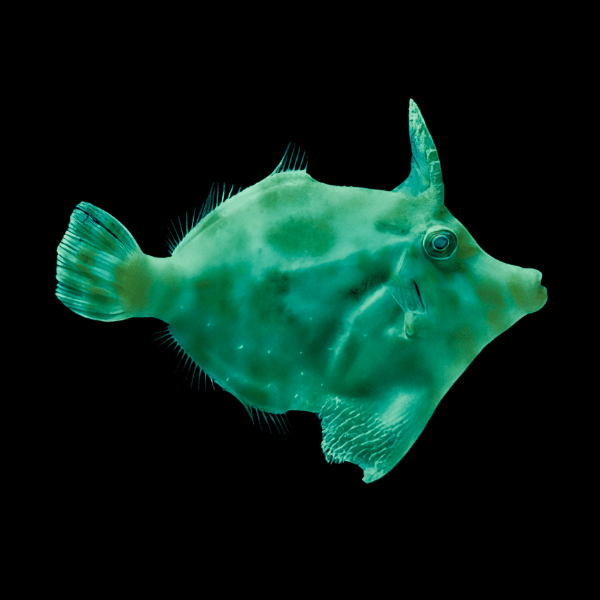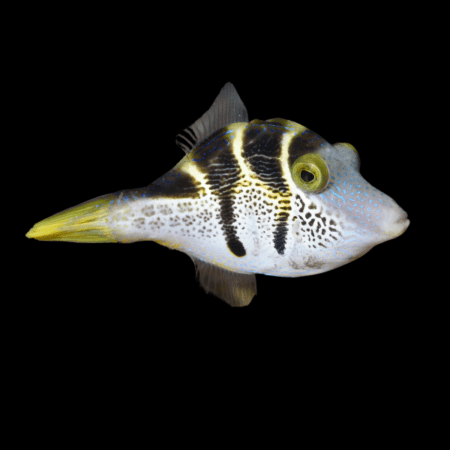Description
Emerald File Fish Monacanthus Ciliatus
Overview
The Emerald File Fish, scientifically known as Monacanthus ciliatus, is a unique and striking marine species known for its vibrant green hues and velvety texture. It is a relatively small fish, reaching up to 5 inches in length, and is characterized by its elongated body and small, retractable spine on its dorsal surface. This fish is a master of camouflage, blending seamlessly with its surroundings to evade predators.
Origin
Native to the warm, tropical waters of the Western Atlantic Ocean, the Emerald File Fish can be found from Florida and the Bahamas, down to the coasts of Brazil. They prefer reef environments, where they can hide among corals and sponges.
Feeding
Emerald File Fish are omnivores with a preference for algae and small invertebrates. In an aquarium setting, they should be offered a varied diet consisting of marine algae, spirulina, mysis shrimp, and brine shrimp. They may also nibble on small polyps of certain corals, so it’s essential to monitor their feeding habits in reef tanks.
Tank Mates
This species is generally peaceful and can coexist with a variety of other fish species. Ideal tank mates include small, non-aggressive fish such as clownfish, damsels, and gobies. They should not be housed with large, aggressive fish that may intimidate or harm them.
Aggression
Emerald File Fish are typically not aggressive towards other fish but can become territorial with members of their own species or similar-looking fish. It’s advisable to keep them singly or in mated pairs to avoid conflict.
Experience Level
Due to their specific dietary and environmental needs, Emerald File Fish are best suited for intermediate to advanced aquarists. Caretakers should be familiar with maintaining stable water conditions and providing a varied diet to ensure their health and wellbeing.
Water Parameters
- Temperature: 72-78°F (22-25.5°C)
- pH: 8.1-8.4
- Specific Gravity: 1.020-1.025
- Alkalinity: 8-12 dKH
The Emerald File Fish requires a well-maintained tank with plenty of live rock and hiding spots to thrive. Their tank should also have a tightly fitted lid, as they are known to jump when startled. With proper care, this beautiful fish can be a captivating addition to any marine aquarium.

